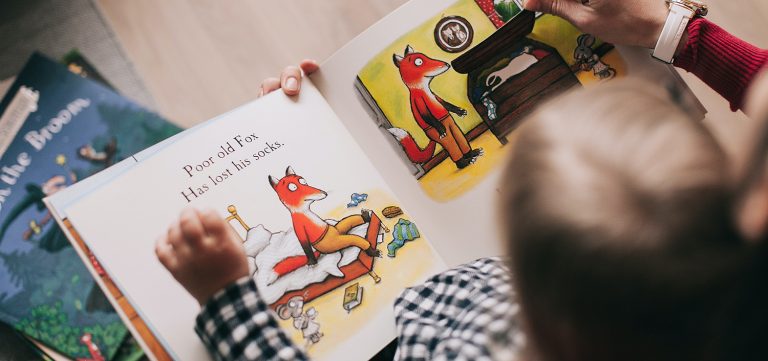“Children’s literature: what are its key characteristics?” is a collaborative post.
Introduction
Children’s literature holds a magical allure that captivates young minds and nurtures their imagination, curiosity, and emotional growth. This unique genre of literature, specifically tailored for young readers, is crafted with utmost care and consideration to engage, inspire, and educate children.
Within the pages of children’s literature, a world of enchanting stories, colourful illustrations, and valuable life lessons awaits, making it an indispensable aspect of a child’s formative years. In this article, we will explore the key characteristics that define children’s literature and its profound impact on shaping the hearts and minds of the next generation.
Why is it important to know what makes good children’s literature?
Understanding what makes good children’s literature is of utmost importance due to its profound impact on young readers’ intellectual, emotional, and social development.
Firstly, good children’s literature nurtures a love for reading from an early age. When children are exposed to well-crafted and engaging stories, they develop a positive attitude toward books and reading, setting the foundation for a lifelong love of literature and learning. This love for reading enriches their lives and enhances their academic performance and critical thinking skills.
Secondly, good children’s literature is pivotal in cognitive and language development. Children reading or listening to stories encounter new vocabulary, sentence structures, and ideas. This exposure to language expands their vocabulary and improves their comprehension abilities. It helps them articulate their thoughts effectively, enhancing communication skills essential for success in academic and social settings.
Furthermore, when well-written, children’s literature delves into characters’ emotional experiences, allowing young readers to empathise with the feelings and struggles of others.
What are the characteristics of children’s literature?
Children’s literature is special in the literary world, enchanting young minds with its captivating stories, vibrant illustrations, and valuable life lessons.
This unique genre caters to children’s developmental needs and interests, shaping their imagination, fostering a love for reading, and instilling important values.
Below we explore the key characteristics that define children’s literature and its profound impact on the growth and development of young readers.
Age-appropriate content and themes
One of the fundamental characteristics of children’s literature is its age-appropriate content and themes. The stories and messages conveyed in these books resonate with young readers’ cognitive and emotional capabilities.
Whether the simplicity of board books for toddlers or the depth of young adult novels for teenagers, children’s literature carefully tailors its narratives to engage and inspire readers within their respective age groups.
In fact, many websites offer kid’s books online, and they are really good. Before buying one for your kid, search for the right online and offline book.
Engaging storytelling
Children’s literature is known for its engaging and imaginative storytelling. Whether through fairy tales, adventure stories, or tales of friendship, these books transport young readers to magical worlds and exciting adventures.
The power of storytelling in children’s literature lies in capturing children’s imagination, making reading a joyful and immersive experience.
Colourful and expressive illustrations
Illustrations are a hallmark of children’s literature. Colourful and expressive artwork complements the text, adding depth to the storytelling and bringing characters and settings to life. For younger readers, picture books with vivid illustrations play a crucial role in conveying the story visually, aiding comprehension and sparking creativity.
Valuable Life Lessons
Children’s literature often imparts valuable life lessons and moral values in subtle and relatable ways. Through the trials and triumphs of the characters, young readers learn about empathy, kindness, honesty, perseverance, and the importance of making good choices. These stories offer children guidance and encourage them to develop a strong moral compass.
Diverse representation
Children’s literature has made significant strides in representing diverse perspectives, cultures, and identities in recent years.
By featuring characters from different backgrounds and experiences, these books promote inclusivity and help young readers develop an appreciation for diversity.
Such representation fosters empathy and understanding, preparing children to be open-minded global citizens.
Language and reading level
Children’s literature is crafted with attention to language and reading level, making it accessible to the intended audience.
For early readers, simple and repetitive language helps build their vocabulary and reading skills. As children progress, the language gradually becomes more complex, challenging them to expand their literary horizons.
Encouragement of imagination and creativity
Children’s literature stimulates imagination and creativity, inviting young readers to explore new worlds and ideas. Fantasy tales with magical creatures, science fiction adventures, and stories of talking animals contribute to nurturing a child’s imagination.
Such engagement with imagination is crucial for cognitive development and the cultivation of creativity.
Emotional resonance
Great children’s literature connects with young readers emotionally, creating characters and stories that resonate deeply with their experiences and feelings.
Whether it’s overcoming fears, dealing with friendship challenges, or discovering one’s identity, emotionally resonant narratives help children process their emotions and gain a sense of comfort and understanding.
Adults can also enjoy good children’s literature
Absolutely!
Adults can derive immense enjoyment and benefit from reading good children’s literature. While these books are primarily targeted at young readers, they often contain timeless themes, universal messages, and well-crafted storytelling that appeals to all ages.
One of the reasons why adults can appreciate children’s literature is its simplicity and purity. The straightforward narratives and clear moral lessons can serve as a refreshing break from the complexities of adult literature.
Children’s literature often addresses fundamental human values and emotions like love, friendship, courage, and perseverance. These themes resonate with adults, offering insights and reminders of the essential aspects of life.
In conclusion, adults can indeed enjoy good children’s literature. These books’ simplicity, purity, universal themes, and imaginative storytelling have a wide appeal that transcends age boundaries.
Reading children’s literature can evoke nostalgia, offer comfort and inspiration, stimulate creativity, and provide shared experiences with young readers. Embracing the enchanting world of children’s books can be a delightful and enriching experience for readers of all ages.






